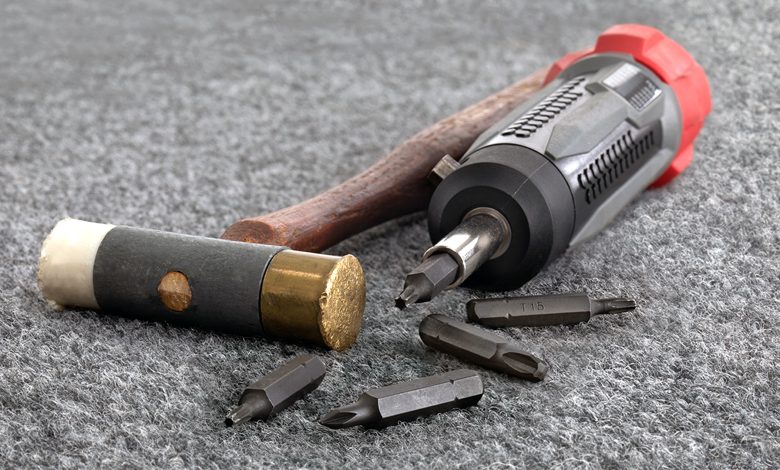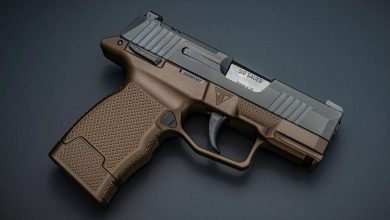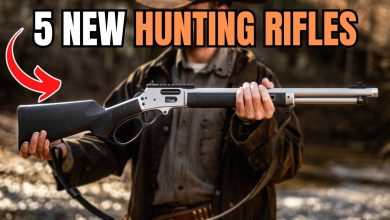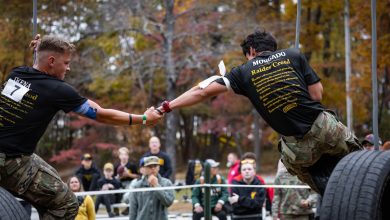Tools For The Beginning Gunsmith

I grew up in a family who hunted and fished and mostly made do with what we had on hand. One thing my dad always made a point of was taking care of what was ours—especially what we used to put food on the table. My job was to run a cleaning rod down the barrels and to wipe down the outside of each of our guns with an oily rag to stave off any signs of rust after each trip afield.
Now that I have started a family of my own, my interest in hunting and fishing continues, but my interest in taking care of and working on my own guns has expanded to the point of fieldstripping them for maintenance and beyond. It has become obvious to me that I need more tools than a hammer and a screwdriver to work on my guns. What tools do you recommend I should start collecting so that I can work on, and possibly upgrade, the guns I currently own? Keep in mind, I am not highly skilled, but I’m eager to learn.
Clint G., Springfield, MO
Having the proper tools to work on guns should be a buy once, cry once proposition. Many people in your position tend to use tools intended for other purposes with limited success. Case in point: A typical carpenter’s claw hammer to adjust a pin or help move a stuck part. One miss with the hammer usually ends up with profane language and damage to the part being worked on that requires additional attention.
Using a general utility screwdriver on the specifically cut screw slots of any gun, most commonly the grip screws of a pistol, inevitably leaves the slots damaged, unsightly and less usable over time.
When selecting tools to work on your guns, it is wise to consider what type of work you intend to do on the guns beyond normal fieldstripping and maintenance. It also bears consideration as to what brand and type of guns you currently have in your inventory as to the tools you might need to acquire. For instance, if you have specific models of pistols and rifles, such as 1911-pattern pistols or AR-15-style rifles, the tools to perform all of the possible tasks border on infinity.
In cases where there are myriad options, deciding what the specific undertaking is going to be first, and then buying the tools to support the job, will help you to find success without spending more money than necessary.
If your goal is maintaining your firearms to keep them in good working order, including cleaning, inspection and lubrication as well as periodic replacement of parts nearing the end of their service life such as recoil springs, specific tools are more of a convenience as opposed to a necessity. The owner’s manual that comes with each firearm is designed to guide the gun’s owner through all these maintenance procedures along with a list of tools, if any, necessary to perform these procedures.
If you decide to delve into the gun’s care and maintenance beyond what the owner’s manual covers, the NRA, most firearm manufacturers and private schools offer maintenance classes, armorer schools and even gunsmithing classes. Each class will have a recommended tool list from which to work.
If you want a few extra tools with which to start, here are a few recommendations. You will have to use your own judgment as to what fills your needs the best.
Buy local if you can, if for no other reason than to see what you are buying beforehand. If that option is not available, Brownells and MidwayUSA are large tool suppliers and are helpful when you have questions.
A shooter such as yourself who is serious about gun maintenance should have:
Screwdrivers, either with fixed or interchangeable tips that correctly fit the screws on your firearms in depth, width and length so when pressure is applied there is no visible disfigurement of the slot while either tight-ening or loosening. If Torx-, Allen (hex)- or Phillips-head screws are present in your guns, the proper fit of the bit is imperative to maintain the integrity of the screw head. Screwdriver sets with a single handle and multiple bits are convenient and economical.
Punches come in all lengths, sizes, shapes and varieties. It is important to define what the punch is supposed to do. Flat-tipped punches are the most common, but cup tip and tips designed for use with roll pins have their specified uses, as well.
A good all-purpose hammer to start with should weigh between 8 and 12 ounces and have interchangeable heads .75 to 1 inch in diameter, with hard and soft driving surfaces. Inevitably, your collection of hammers will increase as the scope of your work expands.
A padded-jaw vise is handy to hold gun parts, as are pliers and tweezers to help with assembly and disassembly in compact spaces.
As you can see, one thing leads to another, and the list becomes endless. My suggestion is to start with what is essential for maintenance on the guns you have and build on that tool collection as you find it necessary.
Read the full article here







